On Friday, July 29, 2016, an accomplishment report presentation for the AY 2016 1st semester course "Software Studio" was held at the Fukushima Museum (*1).
"Software Studio" is a course designed to deepen students' understanding of software engineering by actually having them develop software to meet a clients' needs.
Upon receiving orders from a client, two student teams each work on a different order. Each team starts by holding a hearing with the client to determine the requirements of the software they will develop. Then they design, develop, and test their new product before making a presentation outlining the work they performed in the course and their deliverables. Finally, they deliver their product to the client. Each team has a coach sent from the industry who gives them practical advice on the development process.
Students make weekly progress reports to their instructor and coach, having meetings with their client as needed. They also manage each step of the development process with deliverables such as documentation, which they submit when each step is completed. Clients also participate in interim and final presentations. There, the students analyze, discuss, and report on the quality of deliverables and their working efficiency. This project-based learning course has been conducted since 2009. The deliverables produced by the students are still being used by the client companies and organizations.
In first semester of this academic year, the students worked along with Fukushima Museum to create web applications based on subjects found at the museum.
The achievements presented this semester were as follows.
"Learn About Edo-Era Aizuwakamatsu Castle as You Walk ? A Historical Map-Based Application" (Team A: Bekkotai)
This system allows you to enjoy viewing the historical maps from the museum's collection on your mobile device as you take a stroll through the city. This time, the students digitized the "Mutsu-no-Kuni Aizujo Ezu" (Fukushima Prefecture-Designated Important Cultural Property *2) map created 1644 AD (Shoho 1) during the early Edo period.
Users can deepen their understanding while having fun with old maps by using the application's spot function, which allows users to compare the past with the present, and its quiz and game functions. If users visit specific locations within the castle grounds while using the application, they are posed with quiz questions. They can then use the points they earned from correctly answering questions to play the Item Gacha game (*3). By playing the Item Gacha game, users can collect cards with motifs based on items in the museum's collection (*4) Each of the cards has a different rareness level, so users can enjoy collecting rare cards.
"Application for Sharing First Impressions" (Team B:AizuHF)
This system allows users to input and share their first impressions of the museum's exhibits on their mobile devices. The application includes two primary functions. First, the "Impression Input Function" allows users to photograph exhibits and record their impressions using their mobile device. The second is the "Impression Viewer Function," with which users can refer to the impressions recorded by other users for each exhibit. These and other functions help users further enjoy the exhibits. The data accumulated on users' impressions can also be used to help plan future exhibits.
At this semester's final report presentations, each team gave a presentation on the project as a whole, looking back at the innovations they made, the difficulties they had, and the lessons they learned during the development process. The students reflected that by actually creating software in a limited amount of time, they were able to learn the importance of each step of the process and about schedule management. Afterwards, demonstrations of the software created by the teams were conducted around Tsuruga Castle and at the museum.
The participants who tried out the "Historical Map-Based Application" had the following comments. "It's interesting to be able to see how the castle looked then compared to now." "I like the Gacha function. It's very addictive." "The way you can learn as you actually walk around shares the same novelty of a game application that is currently popular." The participants seemed to have fun using the application, fully enjoying its fun concept.
The "Application for Sharing First Impressions" was demonstrated in an exhibition room of the museum. Participants took pictures of the exhibits and wrote down their impressions of them. The following are a few of the participants' comments. "I like that it also works with English." "It was very interesting to learn that other people noticed things about the exhibits that I hadn't even thought about."
"Software Studio" will continue to develop software based on client requests.
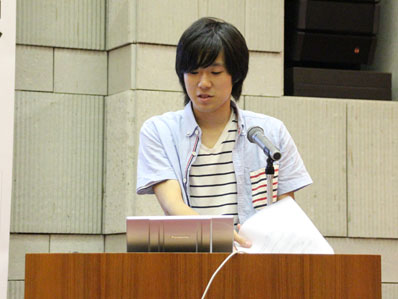
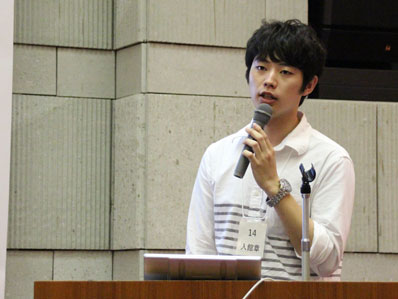
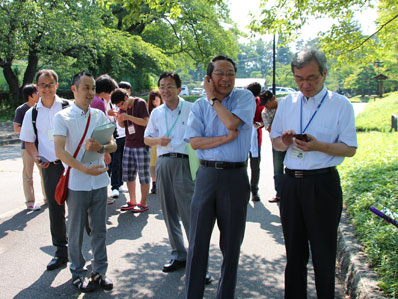
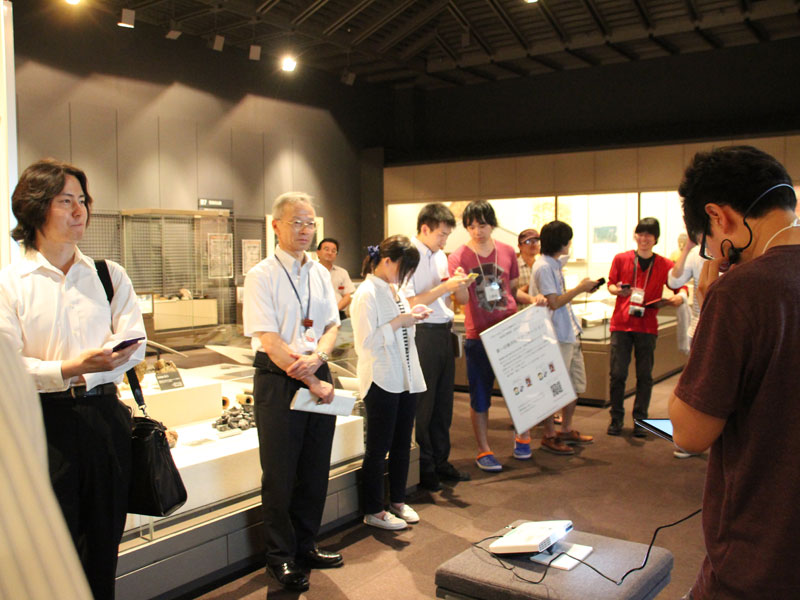
Scene from the Demonstration: Participants walking around Tsuruga Castle's Sannomaru as they try out the "Historical Map-Based. Application" (left), Participants receiving an explanation of the "Application for Sharing First Impressions" in an exhibition room (right)
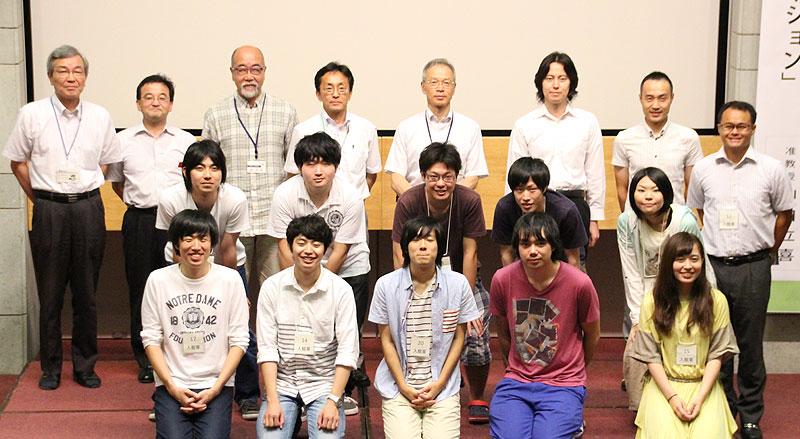
- *1 Fukushima Museum: This museum is located next to Tsuruga Castle, the symbol of Aizu. The museum displays historical, cultural, and natural exhibits that cover the history of Fukushima Prefecture from antiquity to modernity.
- *2 Mutsu Province Aizu Castle Map: This Fukushima Prefecture-Designated Important Cultural Property was selected as one of the Top 100 Fukushima Museum Exhibits.
- *3 Item Gacha: This element allows players to use in-game coins to gain a random item from a virtual capsule toy vending machine. Similar systems are used in social games, etc.
- *4 Cards with motifs based on items in the museum's collection: This app allows users to gain cards featuring motifs based on items in the Fukushima Museum's collection. The cards include pictures and commentary on the items. Each of the cards has a different rareness level. A higher rareness level means that the chance winning the card from the Gacha is lower.


